Few IEMs captured my imagination more than the famous planar-BA hybrid from Dunu.
I waited and waited for a chance to source the IEM. Meanwhile, I looked at the graphs and read all reviews, imagining how these IEMs sound. I even prepared a little joke for the day when I would review them.
Finally.
Finally. I have laid my hands on Talos. How do they sound?
Forewords
- This rapid-fire review is based on a sample by Addicted to Audio (A2A). The sample was returned to the store after the review. It retails at A2A for AUD $339.
- You should treat this review as the subjective impressions of an audio geek rather than an “objective truth” about the IEM. Your experience with any IEM would change depending on your DAC/AMP, music library, ear tips, and listening volume.
- I rate IEMs by A/B testing them against a few benchmark IEMs, regardless of price point. This approach ensures the consistency of the ratings in my ranking list. It means that if two IEMs score the same, they perform more or less similar.
- I believe that great IEMs are the ones that can achieve multiple difficult things simultaneously: (1) high resolution (meaning lines of music are crisp, clear, easy to follow and full of texture), (2) 3D soundstage with a strong sense of depth, (3) bold and natural bass with a physical rumble, (4) natural timbre, (5) relaxing and comfortable tonality.
- Ranking list and measurement database can be found on my IEM review blog.
Specs
- Driver: planar + 2BA
- Connector Type: 2-pin
- Impedance: 16ohm@1kHz
- Sensitivity: 100dB@1kHz
Non-sound Aspects
It’s Dunu. Of course,
the packaging is generous, and the build quality is solid.
The earpieces are made of metal with a form of powdery coating. They are way
smaller yet thicker than I imagined. The dip switch can be operated without additional tools, which is good. My only complaint is the
flushed 2-pin connectors. I’m always worried about snapping off the pins.
You have a nicely constructed canvas case that feels nice and expensive. The cable is thick and shiny but well-behaved, not microphonic.
In the box, you have three types of ear tips. I went directly to the famous S&S tips for my measurement and listening tests. They are nice, though not easy to put on the nozzle. Sticking them to your ears is also hard work due to how sticky they are.
How it sounds
Sources for listening tests:
- Shanling M6 Ultra (thicker low-end, slightly rounded top-end, desktop-like soundstage imaging)
Local FLAC files ripped from CDs or bought from Qobuz were used for most casual listening and A/B tests. My playlist for A/B tests can be found on Apple Music
here.
Tonality and Timbre: 4/5 - Good
Frequency response of Talos in planar and planar+BA mode. Measurements were done with an IEC-711-compliant coupler and might only be compared with other measurements from this same coupler. The new Dunu tips were used for the measurement. Visit my graph database for more comparisons.
Talos has
two distinct sound signatures.
First, let’s talk about
the planar + BA mode because it can be explained in one word: WHY? When activating the BA mode, three changes happen:
- Slightly reduction of high-mid / low-treble (3-5kHz)
- Massive increase of mid-treble (8kHz)
- Massive increase of high-treble (“air”) (15khz)
One positive aspect of this tuning is the soundstage expansion due to the boost in “air.” Simply put,
instruments in an orchestra feel more spread out, away from you and each other. The negative aspect comes from the 8kHz boost, which makes the instruments’ timbre
unrealistically thin and bright. This effect is audible with both orchestras (e.g.,
Presto) and single instrument (e.g.,
Flute Partita in A Minor). The 8kHz boost also introduces deadly sibilance. For example,
Shivers by Ed Sheeran will make you shiver due to how
ice-picky and sibilance it is. The 3kHz dip further emphasises the 8kHz boost. Shiver indeed.
The planar mode is much saner. In general, Talos sounds quite similar to Dunu Titan S. Talos presents music with a sense of
lightness and elegance, utterly devoid of excessive warmth or muddiness. At the same time, Talos does not sound stone cold like Etymotic ER2SE or banshee screaming like some KZ.
Talos’
midrange feels right but a bit too forward. It means that the centre of the stereo image, such as the principal violin in Presto or Ed Sheeran’s voice, stands out and locates unabashedly in my head.
Talos’
treble is quite decent. For example, cymbals and chimes are not harsh but can cut through the mix. The sibilance can be a touch sharp but manageable.
Talos’
bass is Luigi to the midrange Mario. There are still some “boom boom” and deep rumbles, but they are mostly there to complete the mix rather than the highlights. The bass is still more highlighted than Etymotic ER2SE.
How do I rate the tuning of Talos? Firstly, I would ignore the planar+BA mode. The planar mode is trickier to assess. On the one hand, I prefer a slightly thicker tuning. On the other hand, I admire the lightness and elegance of the midrange.
So, I rate Talos’ tonality 4/5 - Good.
Resolution, Detail, Separation: 4/5 - Good
Resolution is a fascinating subject due to the difficulty of pinning down what it really is. The resolution is closely tied to how many quiet and minor details you can hear. Of course, if you turn the music louder, you can spot more details. However, you can only turn up the volume if the tuning does not have random peaks that stab your ears and mask minor details around them. Moreover, you can only hear details if the drivers manage to separate them rather than presenting a blob of sound. Earphone DIYers very well recognise this “true resolution” difference between drivers.
Talos does an
admirable job at macro details or separation. For instance, during the dense phrases of Presto, Talos still managed to keep the instruments cleanly separated due to sharp and clear note attacks. In other words, I can follow each instrument with little difficulty. This characteristic, likely thanks to the planar drivers, gives Talos a
pristine and clean presentation.
Micro-detail is where Talos tumbles. The Flute Partita in A Minor highlights this issue clearly. This piece has only one instrument, the concert flute. Therefore, the textures and nuances, such as the sound of air and the resonance within the flute, play a significant role in the presentation of the Partita. In a quick A/B with the Monarch MkII (5/5 - Outstanding), it was apparent that
Talos misses the last layer of nuances that makes the flute sound so
real with the Monarch. Interestingly, the BA mode did not help as much as I expected.
In summary,
Talos’ resolution falls squarely in at Blessing 2 level: 4/5 - Good. Talos is enjoyably resolving and unlikely to disappoint on this front.
Percussion Rendering: 3/5 - Average
Percussion rendering reflects how well the tuning and technical performance of an IEM work together to recreate realistic sound of a drum set. Good drum hits have a crisp attack (controlled by frequencies from 4kHz to 6kHz), full body (midbass frequencies around 200Hz), and physical sensation (sub-bass frequencies around 50Hz). Good technical performance (“fast” driver) ensures that bass notes can be loud yet detailed. IEMs that cannot control bass very well tend to reduce the bass’ loudness to prevent muddiness.
It’s alright. Talos’ basslines feel “fast” and clean but not impactful. The sense of air pushing against my eardrums is not strong. For instance, the bass drops of
Despacito are not impactful and do not show large dynamic swings. I found that LETSHOUER S12 does a better job here.
I rate Talos’ percussion rendering 3/5 - Average. It is acceptable but nothing to write home about.
Stereo Imaging (Soundstage): 3/5 - Average
Stereo imaging or “soundstage” is a psychoacoustic illusion that different recording elements appear at various locations inside and around your head. Your brain creates based on the cues such as the loudness and phase differences between the left and right channels. Most IEMs do not differ significantly, nor can they compete with headphones or loudspeakers. However, some IEMs offer a more spacious soundstage than others. Best IEMs can create multiple layers of sound from closer to further away and make some instruments float slightly above your head.
Again, it’s alright. Even with my Shanling M6U, which tends to enlarge IEM’s soundstage in all directions, Talos does not project an immersive 3D soundstage. The first issue is the forward midrange, pushing vocals and main instruments strictly in my head. The second issue is that Talos fails to make instruments pop up at different distances (depths) within the soundstage. To me, the stage feels wide but shallow.
In summary, Talos’ stereo imaging is a strict 3/5 - Average.
Not offensive, but I wouldn’t consider it a selling point.
Source Pairing
Talos is
rather demanding.
Of course, you can get loud volume out of anything nowadays. Still, you would need something with more power reserve to avoid flattening the soundstage or killing the bass further. All the descriptions in this article are based on a mid-range DAP, which matches the performance of an entry-level desktop setup like Fiio K7. You can expect slightly worse staging and micro detailing with less capable sources.
My experience with Talos mirrors my previous experience with Dunu Vulkan. I walked away from the listening sessions with an almost empty feeling. That does not mean that Talos is not good. No, it’s an elegant-sounding and handsome-looking IEM. I just expected more, especially from the BA gimmick.
Pros:
- Clean, clear, open midrange
- Highlighted but not overly cooked treble (in planar mode)
- Excellent build quality and packaging
Cons:
- The BA gimmick is not usable
- Bass lacks dynamic swings and impacts
- The soundstage could be deeper for a more 3D presentation










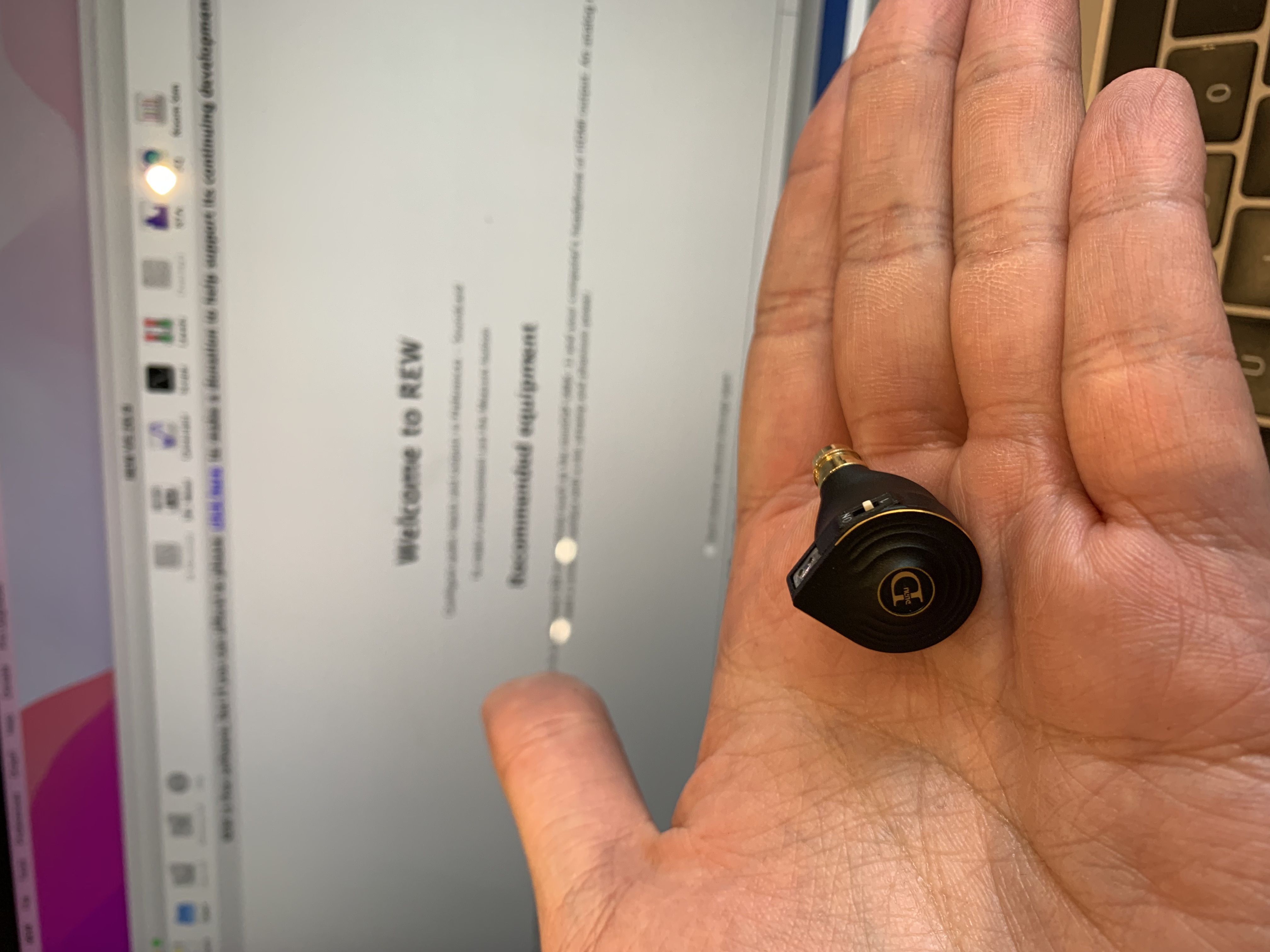
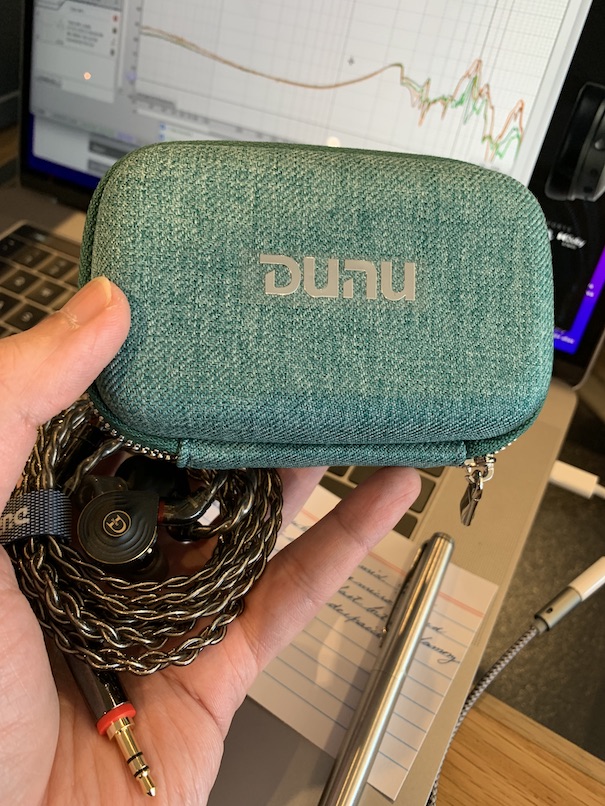
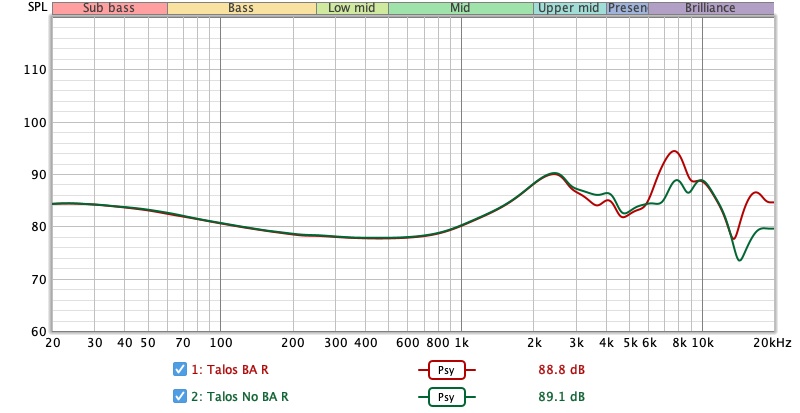
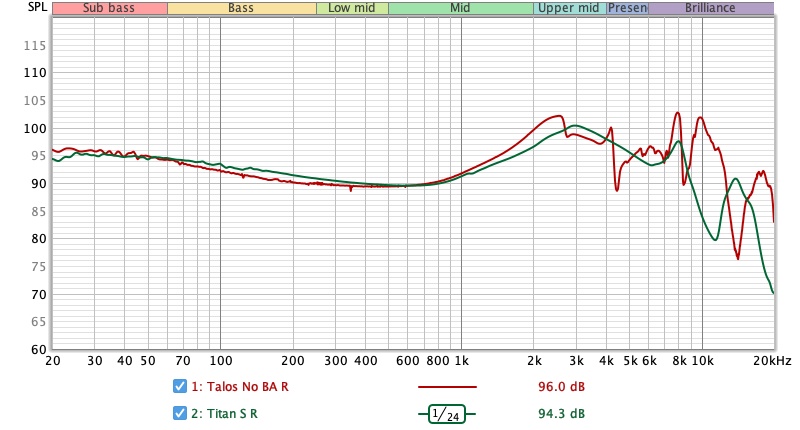



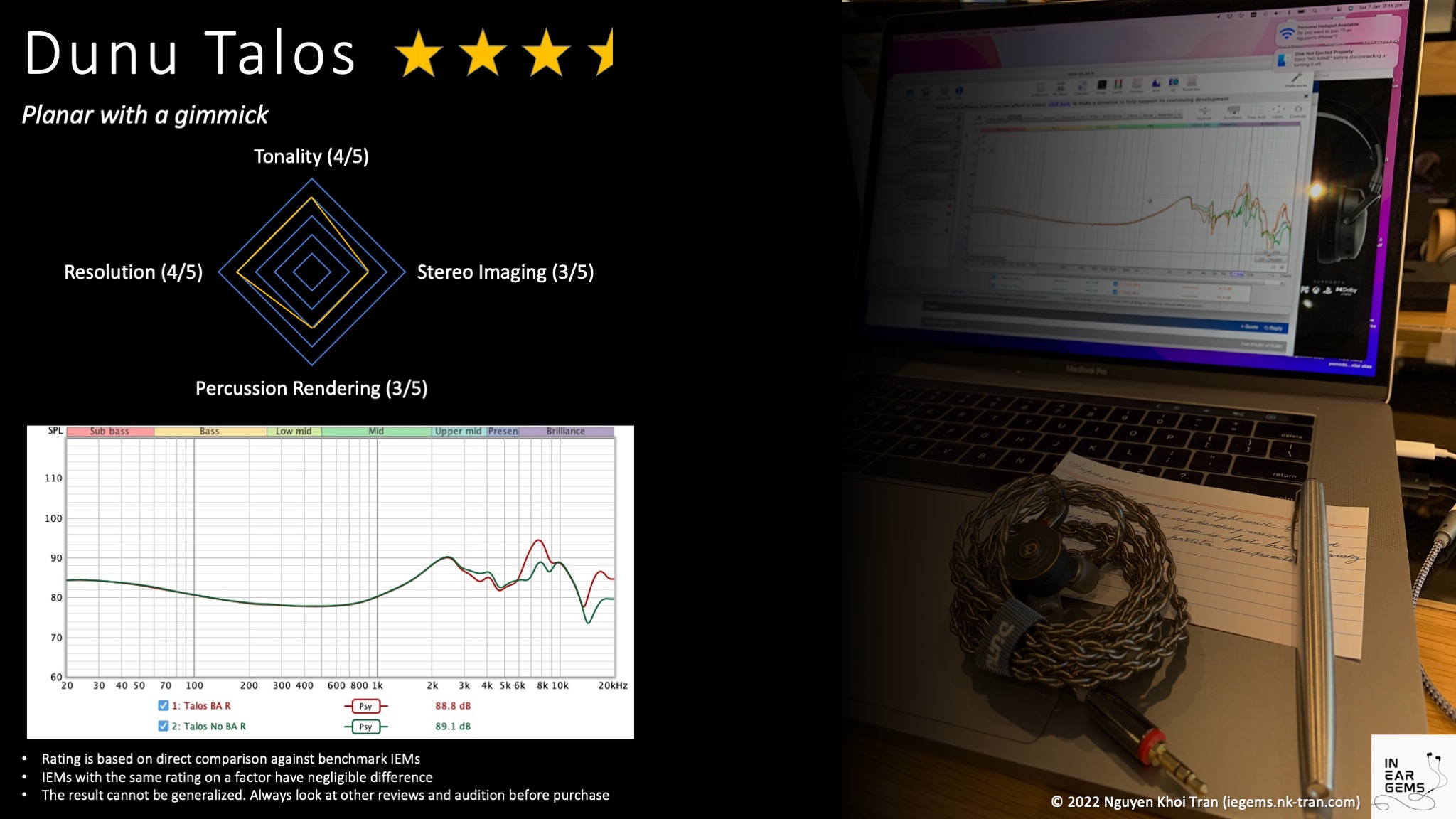














The percussion/micro detail issues are almost entirely fixable with EQ, turns out there's a ton of detail being masked by the mid treble peaks but out of the box the top end is indeed a bit of a mess...but I think it's just the behaviour of this generation of planar driver, Supermoon was similar in that respect.